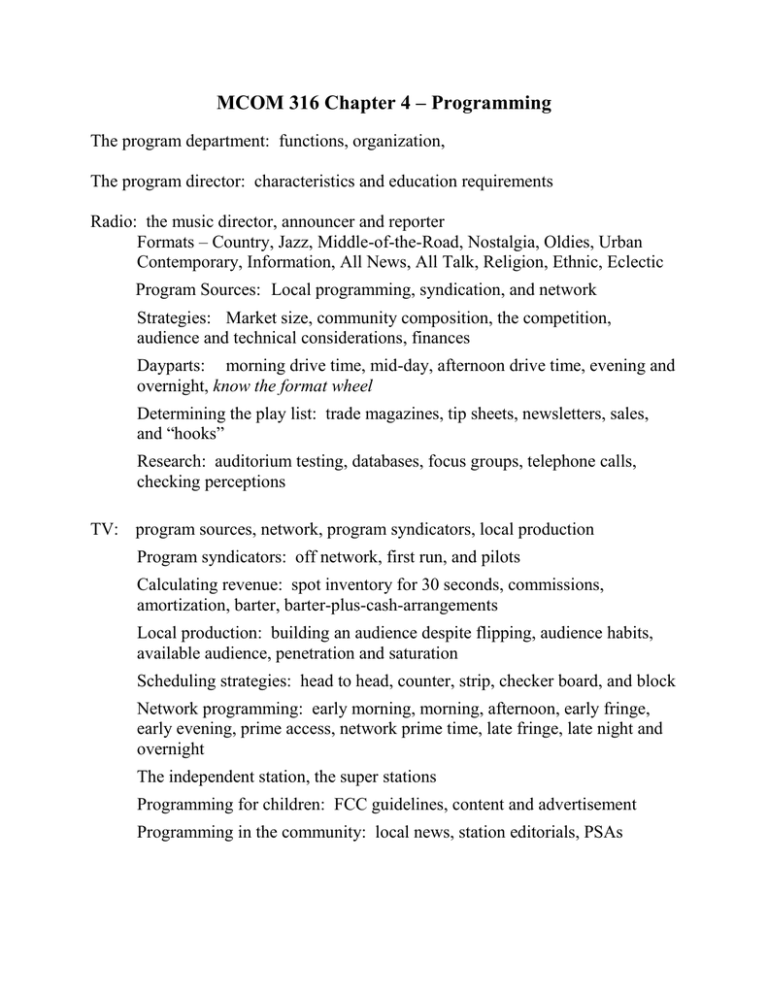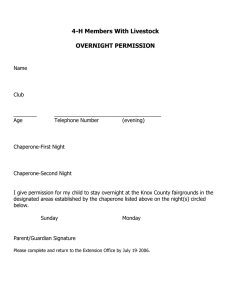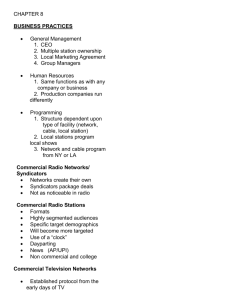MCOM 316 Chapter 4 – Programming
advertisement

MCOM 316 Chapter 4 – Programming The program department: functions, organization, The program director: characteristics and education requirements Radio: the music director, announcer and reporter Formats – Country, Jazz, Middle-of-the-Road, Nostalgia, Oldies, Urban Contemporary, Information, All News, All Talk, Religion, Ethnic, Eclectic Program Sources: Local programming, syndication, and network Strategies: Market size, community composition, the competition, audience and technical considerations, finances Dayparts: morning drive time, mid-day, afternoon drive time, evening and overnight, know the format wheel Determining the play list: trade magazines, tip sheets, newsletters, sales, and “hooks” Research: auditorium testing, databases, focus groups, telephone calls, checking perceptions TV: program sources, network, program syndicators, local production Program syndicators: off network, first run, and pilots Calculating revenue: spot inventory for 30 seconds, commissions, amortization, barter, barter-plus-cash-arrangements Local production: building an audience despite flipping, audience habits, available audience, penetration and saturation Scheduling strategies: head to head, counter, strip, checker board, and block Network programming: early morning, morning, afternoon, early fringe, early evening, prime access, network prime time, late fringe, late night and overnight The independent station, the super stations Programming for children: FCC guidelines, content and advertisement Programming in the community: local news, station editorials, PSAs


